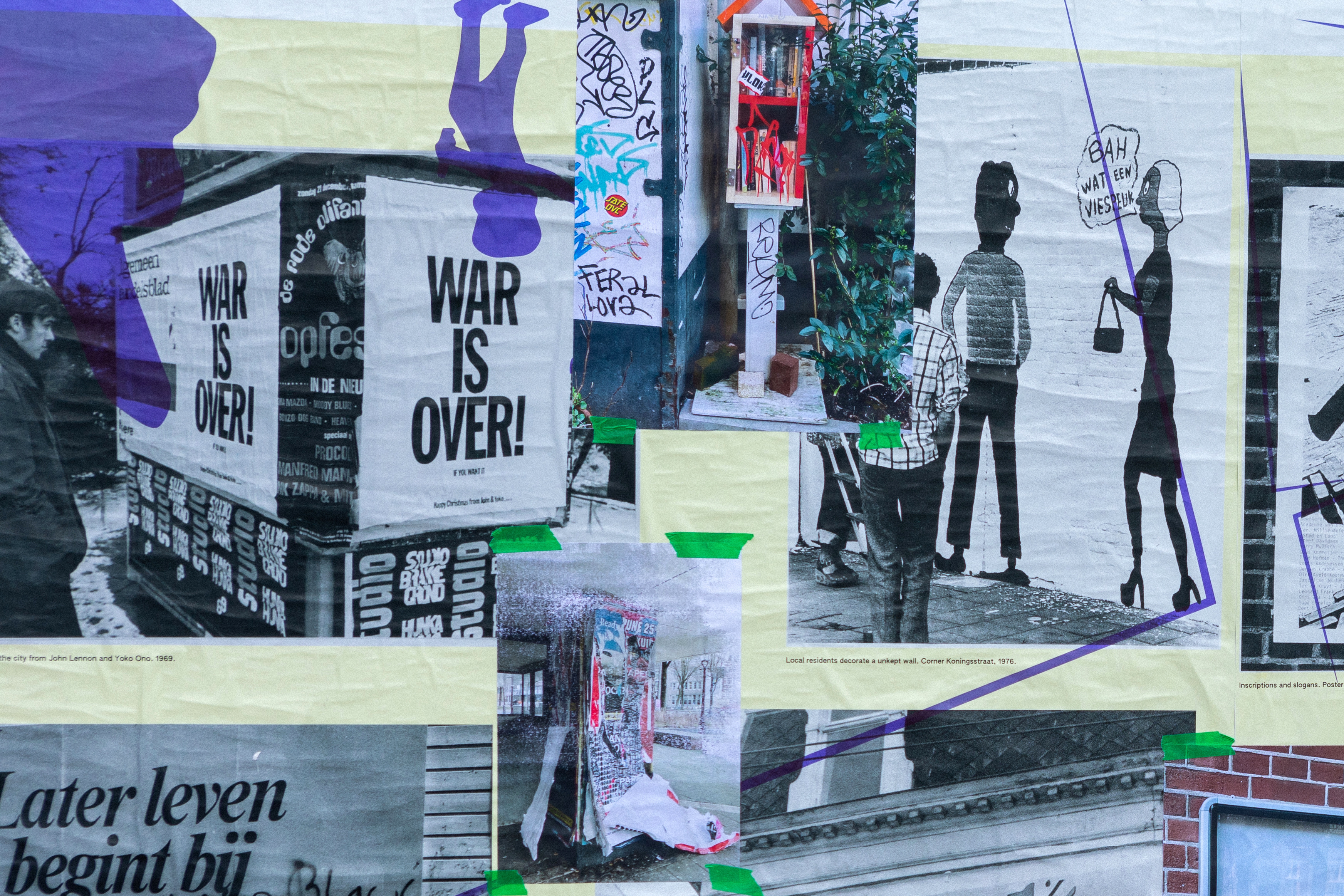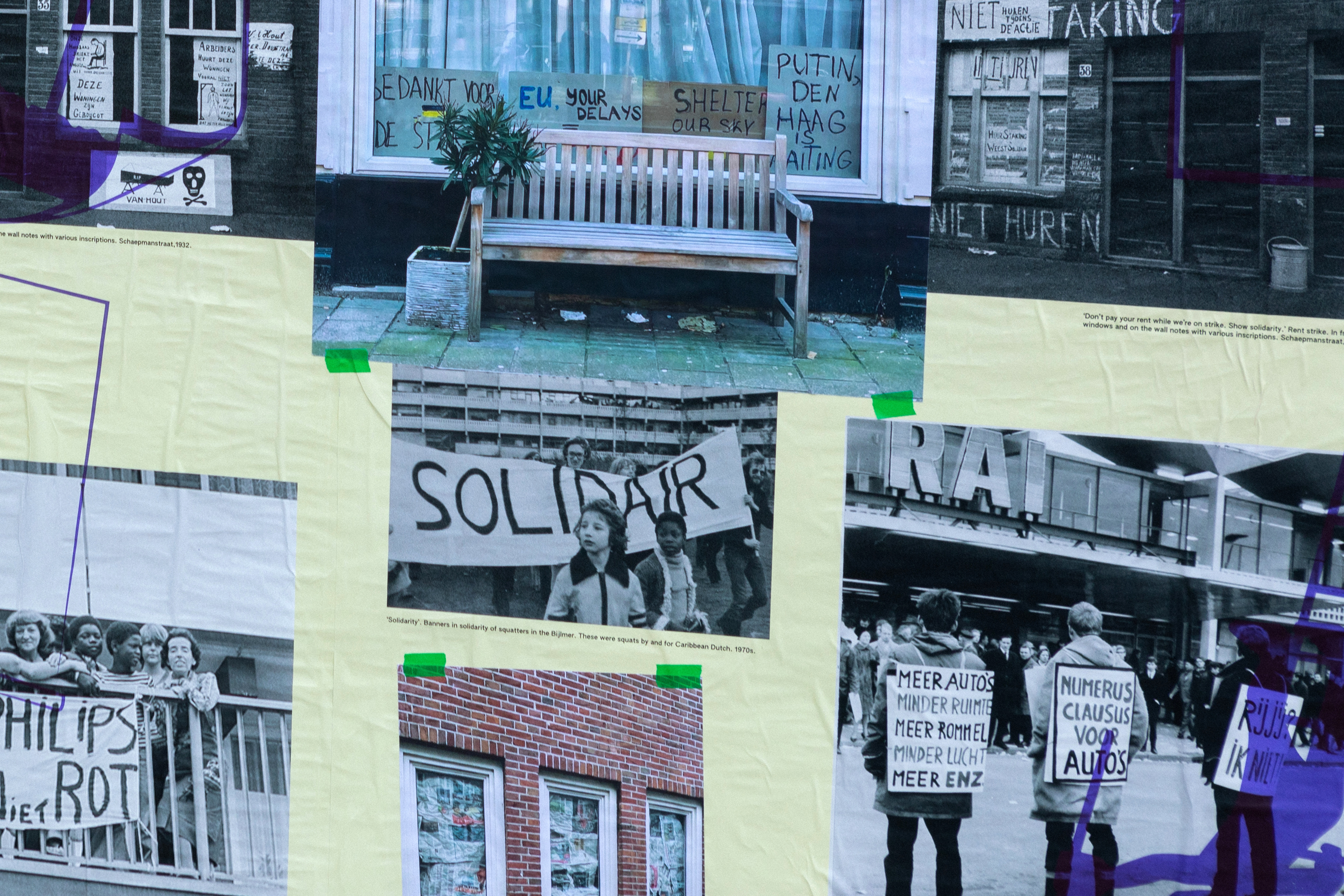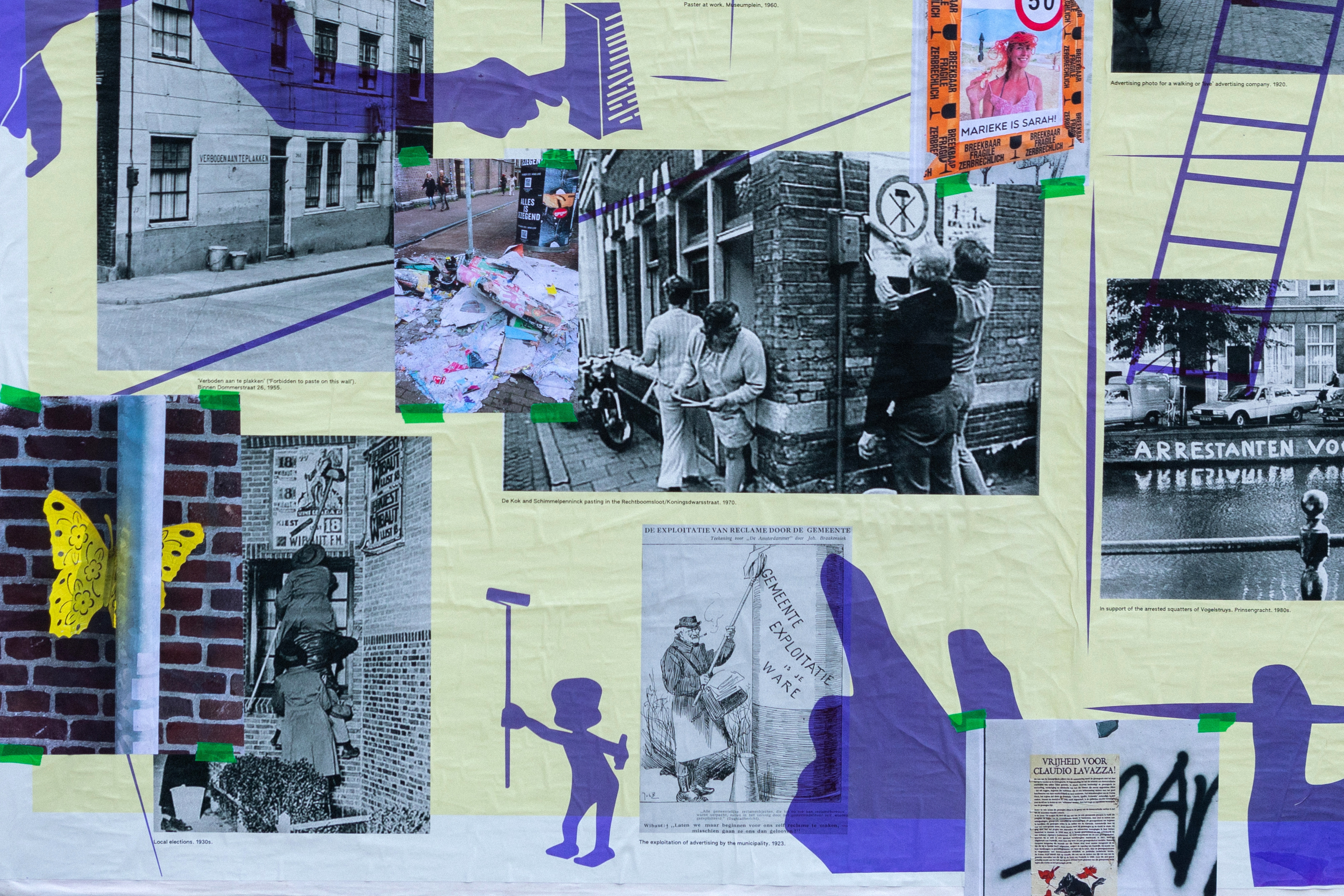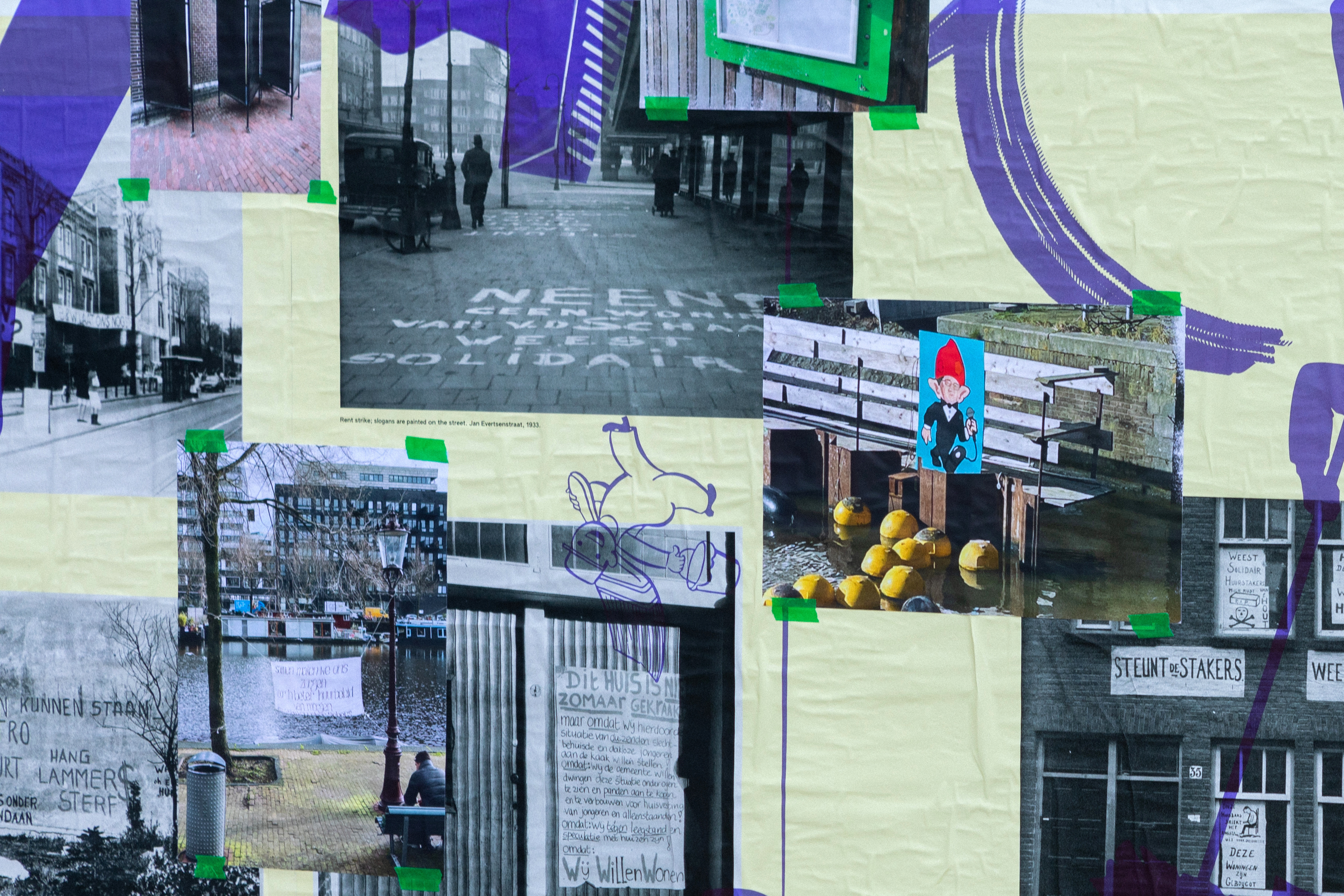Public Display

The project “Public Display” examines the tools and platforms cities offer as means to disseminate ideas. How one meets graphic design in the city is mostly in service of advertisements or giving direction. Rarely does it have the opportunity to be displayed in its most rogue form, unhinged from commercial or infographical responsibilities. A more specific interest in this subject arose when the worldwide pandemic hit us, closing all public institutions and workplaces. This turned our attention towards the cityscape and its potential to share ideas in the open air.
The subject matter of our research has been an integral part of both of our teaching practices for the past few years. In the framework of the fellowship we organised a workshop with graphic design students around exhibiting their work in the public space. Though the workshop was of practical nature, we had a lot of interesting discussions about the role of graphic design in our surroundings. Through sharing the materials of our research with the students we recognised the need to make this material accessible in order to find means to connect to histories of visual communication.
The project combined fieldwork, visiting archives and conducting interviews. Our research began with collecting historical materials from the Amsterdam City Archive and the International Institute of Social History that concern the display of graphic materials in the public domain. As part of the fieldwork we mapped public spaces, community art venues, vitrines, public poster walls and other designated spaces and surfaces where designers as well as citizens at large could share their ideas and works. Lastly we conducted interviews with Amsterdam-based graphic design collective Experimental Jetset as well as graphic designer and educator Henk Groenendijk. We also met up with Valentijn Goethals, a graphic designer and organiser who’s been involved in numerous public space related projects in his hometown Gent. Conversations with Valentijn Goethals and Experimental Jetset have been edited and published for the occasion of the Fellowship symposium and exhibition and are available for download below:
City as an Infrastructure for Language
A conversation with Experimental Jetset
Billboards, Flags & Happy Accidents
A conversation with Valentijn Goethals



